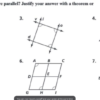Calculating the time until a specific moment, like 10:40 AM, is an essential skill for many tasks and time-sensitive activities. Whether you’re trying to catch a meeting, align with a schedule, or simply track your daily goals, knowing how to calculate time intervals helps you stay organized and punctual.
In this article, we’ll discuss how to calculate the number of minutes until 10:40 AM, explore the practical importance of time intervals, and look at ways to optimize time management in everyday life.
1. How to Calculate Time Until a Specific Hour
When asked, “How many minutes until 10:40 AM?” the answer will vary depending on the current time. Here’s a simple method you can use to make this calculation accurately:
- Identify the Current Time: Check your clock or device to see what time it is now.
- Determine the Minutes Until the Next Full Hour: For example, if it’s 9:15 AM, there are 45 minutes left until 10:00 AM.
- Add the Remaining Minutes: Since 10:40 AM is 40 minutes after 10:00 AM, you would add these 40 minutes to the time calculated in step two.
Let’s break it down with an example:

- Example: If it’s 9:00 AM, to calculate the minutes until 10:40 AM, you’d note that:
- From 9:00 to 10:00 is 60 minutes.
- From 10:00 to 10:40 is 40 minutes.
- Total time until 10:40 AM = 60 + 40 = 100 minutes.
This straightforward approach works for any specific time target, whether it’s later the same day or even at another time entirely.
2. The Importance of Knowing Time Intervals
Tracking time intervals is useful for numerous purposes, such as:
- Scheduling: Being able to calculate the time until a specific event (like a 10:40 AM meeting) helps you know when to prepare or leave for it.
- Productivity: Many productivity techniques, like the Pomodoro Technique, rely on tracking specific time intervals for focused work and breaks.
- Transportation: When planning travel, knowing how long it is until your next train, bus, or flight is essential to avoid missing it.
- Reminders and Alarms: Setting reminders for events like meetings or appointments often requires knowing the exact countdown to the event’s start time.
3. Tools to Help Calculate Time Intervals
Various tools and devices can help you track time intervals, whether manually or digitally:
- Clocks and Watches: Digital clocks often display time down to the minute, which makes manual calculations simpler.
- Smartphones and Smart Devices: Most phones and smartwatches come with built-in timers, countdowns, and alarm functions, which help you automate reminders.
- Calendar Apps: Many calendar applications, like Google Calendar, can remind you of events with specific time warnings, making it easy to prepare ahead.
- Timer Apps: Apps like Timer, Pomodone, or Focus Keeper offer countdowns and timers to keep you aware of upcoming events or track specific intervals.
4. Common Situations Requiring Time Calculations
Time calculations are necessary in many real-life scenarios. Here are some common examples:
- Cooking and Baking: Recipes often specify cooking times, and knowing how many minutes remain is crucial to avoid overcooking.
- Exercise and Fitness: Many workouts are structured around specific time intervals, with timed rest and activity periods.
- Meeting Deadlines: Whether for school, work, or personal projects, calculating time until deadlines helps ensure on-time completion.
- Event Planning: Knowing how long it is until an event starts helps with planning logistics, setting up, and ensuring everything is ready on time.
5. Tips for Managing Time Effectively
While calculating specific intervals is helpful, improving overall time management can further enhance productivity and reduce stress. Here are some strategies:
- Use Time-Blocking Techniques: Time-blocking involves scheduling dedicated blocks for different tasks. This approach can help break large tasks into smaller, manageable parts, ensuring you stay on track.
- Set Priorities: Prioritize your day by focusing on high-priority tasks first. For example, if a meeting at 10:40 AM is critical, plan your morning activities around it.
- Limit Distractions: Stay focused on tasks that need immediate attention. By reducing distractions, you can complete tasks faster and more efficiently, freeing up time for other priorities.
- Practice Mindfulness: Being mindful of how you spend your time helps avoid unnecessary time-wasting and allows for better allocation of attention and energy.
- Use Alarms and Timers Wisely: Alarms and timers are simple yet powerful tools for keeping on schedule. By setting reminders for specific intervals, you’re less likely to lose track of time.

6. Why Knowing Time to the Minute Matters
Knowing exact time intervals may seem like a small detail, but it’s invaluable in both personal and professional contexts. For professionals, punctuality can convey reliability and respect. For individuals in personal settings, precise timing can improve productivity and enhance time management skills.
A few minutes may not seem significant, but in a fast-paced world, each minute counts. Having control over time helps reduce stress, improves decision-making, and fosters a sense of achievement. Understanding how many minutes are left until a given point allows you to optimize every part of your day, especially in a world where schedules and expectations can be demanding.
Conclusion
The next time you need to know how many minutes until 10:40 AM, remember that the answer depends on your current time, and knowing how to calculate it quickly can be helpful. Managing time is about more than just knowing the current hour; it’s about leveraging each minute to reach your goals and reduce stress.
With the right techniques and tools, anyone can develop time management skills to stay organized and productive, whether for specific moments like 10:40 AM or the whole day ahead.



